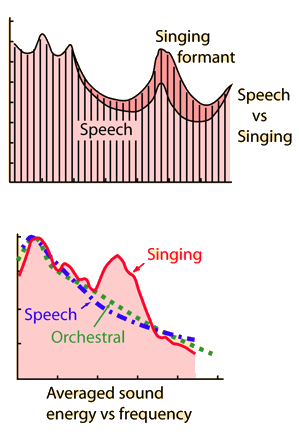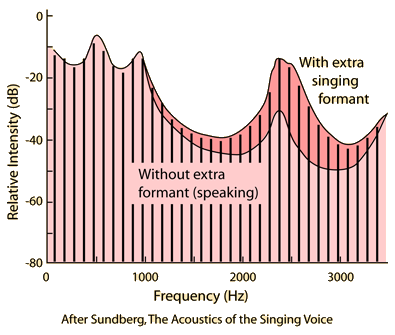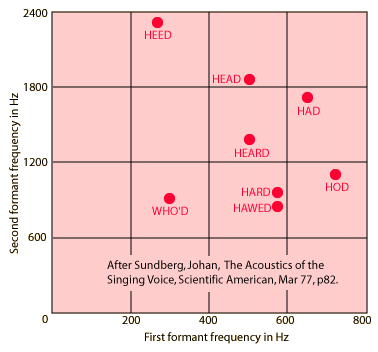The Singing Formant
|
The extensive research of Johan Sundberg into the vocal production of opera singers led him to the concept of the "singing format", an additional vocal resonance associated with singing which is different from the spoken sound. This singing formant also aids the opera singer by standing out above the typical orchestral accompaniment. Sundberg associates the singing formant with lowering the larynx while singing. You can click on either graphic at right for further details. |
 |
| Equal tempered frequency list |
Voice concepts
Musical instruments
Reference
Sundberg
Scientific American, March 77
| HyperPhysics***** Sound | R Nave |


